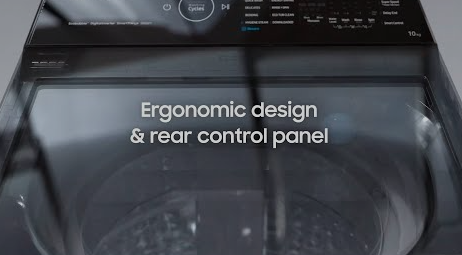The Future Of Automatic Inventory Tracking For Laundry Products:

In the dynamic landscape of modern business operations, efficiency and precision are paramount. One area where these factors play a crucial role is in the management of laundry products. Traditional inventory tracking methods are becoming obsolete, paving the way for cutting-edge solutions that leverage automation. This comprehensive exploration delves into the realm of automatic inventory tracking for laundry products, shedding light on its significance, implementation, benefits, and the technological marvels that underpin this transformative approach.
I. Introduction
In an era marked by technological advancements, businesses are increasingly turning to automation to streamline their operations. Automatic inventory tracking for laundry products represents a paradigm shift in how businesses manage their resources efficiently.
II. The Significance of Automatic Inventory Tracking
To comprehend the importance of automatic inventory tracking, one must first understand the challenges faced by traditional methods. Manual tracking is prone to errors, time-consuming, and lacks real-time visibility. Automatic inventory tracking addresses these issues, offering a solution that is accurate, swift, and provides a real-time overview of inventory levels.
III. Technological Foundations
At the heart of automatic inventory tracking lies a combination of cutting-edge technologies. RFID (Radio-Frequency Identification) and IoT (Internet of Things) play pivotal roles in creating a seamless and efficient tracking system. RFID tags are affixed to laundry products, and IoT devices communicate with these tags, relaying valuable data to a centralized system.
IV. Implementation Process
Implementing automatic inventory tracking requires a strategic approach. The first step involves tagging each laundry product with RFID labels. These tags contain unique identifiers, enabling precise tracking. IoT sensors placed strategically within the laundry facility capture data from these tags, creating a digital representation of the entire inventory.
V. Real-Time Monitoring and Data Analytics
One of the key advantages of automatic inventory tracking is the ability to monitor inventory levels in real-time. The system continuously updates data, offering a live snapshot of stock levels. This real-time monitoring is complemented by advanced data analytics, providing insights into usage patterns, demand forecasting, and identifying potential areas for optimization.
VI. Benefits of Automatic Inventory Tracking
The advantages of adopting automatic inventory tracking are manifold. Enhanced accuracy, reduced labor costs, and improved efficiency are just a few of the benefits. By automating the tracking process, businesses can allocate resources more effectively, minimize stockouts, and enhance overall operational agility.
VII. Cost-Efficiency and Resource Optimization
Automatic inventory tracking contributes significantly to cost-efficiency. The elimination of manual tracking reduces labor costs, and the ability to optimize inventory levels based on data analytics prevents overstocking or understocking. This, in turn, results in better resource allocation and cost savings.
VIII. Mitigating Human Errors
Human errors are inherent in manual inventory tracking systems. Miscounts, misplaced items, and data entry mistakes can lead to substantial losses. Automatic inventory tracking minimizes these errors by relying on precise RFID technology, ensuring an accurate representation of the laundry product inventory.
IX. Integration with Existing Systems
Seamless integration with existing systems is a crucial aspect of adopting automatic inventory tracking. Whether it’s interfacing with existing ERP (Enterprise Resource Planning) software or other management systems, a well-designed integration ensures a smooth transition and enhances overall operational coherence.
X. Scalability and Future-Proofing
As businesses evolve, scalability becomes a critical consideration. Automatic inventory tracking systems are designed to scale with the growing needs of the business. The flexibility of these systems allows for easy integration of additional tags and sensors, future-proofing the investment and ensuring long-term viability.
XI. Security and Data Privacy Considerations
While the benefits of automatic inventory tracking are immense, it’s essential to address security and data privacy concerns. Implementing robust cybersecurity measures, encrypting data transmissions, and ensuring compliance with data protection regulations are imperative to build trust and safeguard sensitive information.
XII. Case Studies: Success Stories
Examining real-world case studies provides valuable insights into the effectiveness of automatic inventory tracking. Highlighting success stories from various industries, such as hospitality, healthcare, and manufacturing, underscores the versatility and widespread applicability of this transformative technology.
XIII. Challenges and Future Developments
Despite the numerous advantages, challenges persist in the realm of automatic inventory tracking. Issues such as initial implementation costs, technological barriers, and resistance to change require thoughtful consideration. Looking ahead, emerging technologies like blockchain may further enhance the capabilities of automatic inventory tracking systems.
XIV. Conclusion: A Paradigm Shift in Laundry Management
In conclusion, automatic inventory tracking for laundry products represents a transformative leap forward in the way businesses manage their resources. The integration of RFID and IoT technologies, coupled with real-time monitoring and data analytics, elevates efficiency, reduces costs, and mitigates errors. As industries continue to embrace automation, the adoption of automatic inventory tracking is not just a choice but a strategic imperative for those aiming to stay competitive in an ever-evolving business landscape.



